

Sir Edmund Percival Hillary KG ONZ KBE (20 July 1919 – 11 January 2008) was a New Zealand MOUNTAINEER, Explorer, and philanthropist, On 29th May 1953, Hillary and Nepalese Sherpa mountaineer Tenzing Norgay became the first climbers confirmed to have reached the summit of Mount Everest, They were part of the ninth British expedition to Everest, led by John Hunt. From 1985 to 1988 he served as New Zealand's High commissioner to India and Bangladesh and concurrently as Ambassaor to Nepal.
Image Above - In 1953 Tenzing Norgay and Edmund Hillary were the first to successfully summit Everest, the world’s tallest mountain at 29,029 feet. Hillary became interested in mountaineering while in secondary school. He made his first major climb in 1939, reaching the summit of Mount Ollivier. He served in the Royal New Zealand Air Forces a navigator during World War II. Prior to the Everest Expedition, Hillary had been part of the British Reconnaissance expedition to the mountain in 1951 as well as an unsuccessful attempt to climb Cho Oyu in 1952. As part of the Commonwealth Trans-Antarctic Expedition he reached the South Pole overland in 1958. He subsequently reached the North Pole, making him the first person to reach both poles and summit Everest.
Tenzing Norgay, (29 May 1914 – 9 May 1986) the Sherpa mountaineer who climbed Mount Everest with Sir Edmund Hillary, should have been knighted like others on the historic expedition but he did receive the George Medal for his efforts. It has been suggested that Indian prime minister Jawaharial Nehru refused permission for Norgay to be knighted.Following his ascent of Everest, Hillary devoted himself to assisting the Sherpa people of Nepal through the Himalayan Trust, which he established. His efforts are credited with the construction of many schools and hospitals in Nepal. Hillary had numerous honours conferred upon him, including the Order of the Garter in 1995. Upon his death in 2008, he was given a state funeral in New Zealand.
FIRST FOOT STEP ON MOUNT EVEREST - " SIR EDMUND HILLARY & TENZING NORGAY "


Sir Edmund Hillary who conquered Mount Everest was a shy New Zealand beekeeper
First woman to reach the summit - Junko Tabei - Japan - May 16th, 1975
Highest number of times to reach summit- - 22 -Kami Rita Sherpa - Nepal - May 16th 2018. First person to summit 22 times by 2018, Kami Rita Sherpa - Nepal
First woman to summit once, Junko Tabei - Japan - May 16th, 1975 - First woman to reach summit (so both the youngest and oldest) woman to summit 35 years 236 days - Junko Tabei - Japan - May 16th, 1975.
Lhakpa Sherpa at Mount Washington - Most ascents by a woman - 9 - Lhakpa Sherpa - Nepal
Most summits with supplementary oxygen - 10 - Ang Rita Sherpa - Nepal - May 23rd, 1996. 'Snow Leopard' Ang Rita Sherpa receives Guinness certificate
Most summits by a foreigner - 15 - Dave Hahn - United States
Most ascents by a foreign woman - 6 - Melissa Arnot - United States
Most ascents by a nation - United Kingdom - 13 - Kenton Cool
Most ascents by a nation, New Zealand - 9 - Mike Roberts
Most ascents by a nation - Japan - 9 - Hiroyuki Kuraoka
Image Above far left - (The view from the 8,850-meter (29,035-foot) peak of Mount Everest. AP Photo by Hiroyuki Kuraoka - In this photo provided by Japanese mountain guide Hiroyuki Kuraoka, 71-year-old climbs the summit of Everest.
First to summit twice - Nawang Gombu - Nepal - 1963, 1965
First dual ascent made by a woman on Mount Everest summit within five days - Anshu Jamsenpa - India - 21st May 2017
Image Above - Fastest ascent from Everst South Base camp with supplemental oxygen - 10 hours, 56 mins, and 46 secs - Lhakpa Gelu Sherpa - Nepal - May 26th, 2003 - Fastest ascent from Everest South Base camp without supplemental oxygen - 20 hours and 24 minutes - Amen Kumar Sinha - India - October 17th, 2008.

Fastest ascent without supplemental oxygen and fastest ascent from Everest North base camp, - 16 hours and 45 minutes - Hans Kammerlander - Italy - May 24th, 1996.

Longest stay on the summit of Mt Everest - 21 hours exact - Carl J Leger - Nepal - May 6th, 1999.

Pemba Dorje's Everest record has now been rejected by the Nepal Supreme Court, the Nepal Ministry of Tourism, and Guinness world records.
Pemba Dorje is a Sherpa from beding, Rolwaling Valley, Dolkha, Nepal, He made the fastest ever ascent of Mount Everest on 21 May 2004, taking eight hours and ten minutes. The record was confirmed by Nepal's tourism ministry. The record has since been rejected by the Nepal Supreme Court, the Nepal Ministry of Tourism, and the Guinness Book of World Records. Pemba Dorje previously set a record for the fastest summit of 12 hours and 45 minutes in 2003, only to see it broken by Lakpa Gelu Sherpa three days later who set a new record of 10 hours 56 minutes. Pemba Dorje disputed the claim of Lakpa Gelu, believing his result was untrue, but the Nepalese government ruled it was valid.

Deadliest Accident
Most confirmed deaths in a single 24 hour period on Mt Everest currently stands at 22, This tragic event occurred on April 25th, 2015.
The avalanche triggered by the 25th April earthquake was due to a large release of Pumori at the back of Everest Base Camp which impacted alongside the camp and sent a wave of energy, ice and snow across base camp in what appeared to all as a massive avalanche. The image above was taken by Paul Devaney the day before the quake and focuses from the Khumbu icefall on Everest towards Base Camp and Pumori, Paul's camp got the tail end of the air blast with most of the 22 or more casualties occurring within the damage zone depicted in this image, Paul spent time in Kathmandu in the period that followed helping Nepal Ireland Society and Redpoint with their relief work.
Image Above - Oldest summiters - 80 years, 224 days - Yuichiro Miura born 1932 - Japan - Reached summit on May 23rd 2013.
76 years 340 days - Min Bahadur Sherchan - Born 1931 - Nepal- - Summited in 2008.
72 years - Bill Burke - United states - May 25th 2014 - Burke shows off his gear and mementos in his Costa Mesa home. Burke, 73, is preparing to climb 22,775-foot Burke Khang, a mountain named in his honor by Nepal's Mountaineering Association. Burke broke his own record in May as the oldest American to reach the top of Mount Everest, summiting at age 72 after also reaching the top at 67.

71 years 61 days - Katsusuke Yanagisawa - Japan - May 22nd, 2007.

70 years 225 days - Takao Arayama - Japan - May 2006 - Oldest Person To Climb Seven Summits (Including Carstensz): In February 2010, Japan's Takao Arayama scaled Kilimanjaro in Tanzania, Africa, rounding up successful climbs on all the Seven Summits. He was 74 years 138 days old at the time.
66 years - Mario Curnis born 1936 - Italy - 24th May 2002
65 years - Sir Ranulph Fiennes born 1944 - United Kingdom - 21st May 2009
50 years - Chris Bonington born 1934 - United Kingdom - April 1985
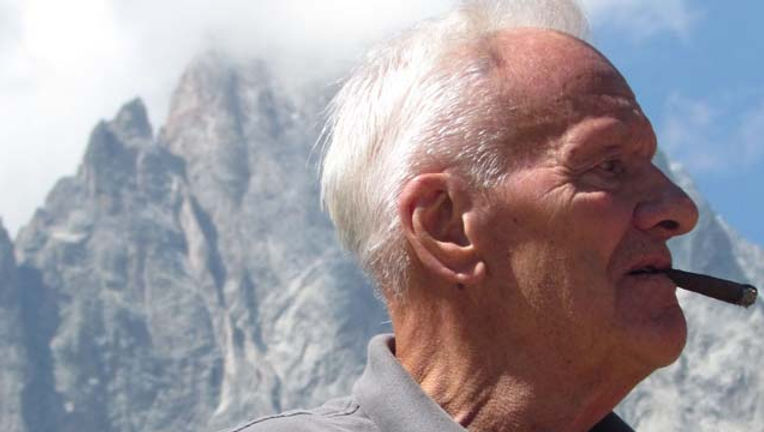
49 years 52 days - Pierre Mazeaud born 1929 - France - 15th October 1978
Oldest female summiter - 73 years 180 days - Tamae Watanabe - Japan - May 19th, 2012

Youngest summiters
Youngest person to climb Mount Everest 13 years 10 months 10 days old - Jordan Romero - United States - May 22nd, 2010 - Youngest person to climb Mount Everest (2011-Current) 17 years 4 months old - Akash Chadna - India - September 20th, 2013
Youngest girl to climb Mount Everest, 13 years and 11 months old - Malavath Purna - India - May 25th, 2014


Youngest person to climb Mount Everest (2003-2010) 15 years old - Ming Kipa - Nepal - May 24th 2003
Ming Kipa (Nepalo)मिङ किपा शेर्पा) (born 1988) is a Nepaleses Sherpa girl who held the record as the youngest person to climb Mount Everest from 2003 to 2010. She reached the summit on May 24th 2003 when she was 15 years old, with her brother Mingma Gyula and her sister Laphka. Nepalese law does not allow climbers under 16 to climb Everest, so Ming Kipa Sherpa summitted Everest from the Chinese side. Her record was broken in 2010 when Jordan Romero reached the summit on May 22nd of that year at the age of 13 years, 10 months. The previous record holder was Temba Tsheri who climbed Everest at the age of 16 in 2001.

First ascent without supplemental oxygen - Summited - Reinhold Messner (Italy) and Peter Habeler (Austria) - May 8th, 1978. Timeless mountaineering: aged 74 Peter Habeler, one of the world’s greatest mountaineers who in 1978 made the first ascent of Everest without supplementary oxygen together with Reinhold Messner, has now climbed the North Face of the Eiger once again. In 1974 Habeler had climbed the mountain in record time with Messner, while now he repeated the route with another world famous alpinist, young David Lama.

First winter ascent, Summited - Left Krzysztof Wielicki and Right Leszek Cichy (Both Polish) Reached summit on February 17, 1980.


First solo ascent, simultaneously first solo ascent without supplemental oxygen - Record summitted - Reinhold Messner - Italy - August 20th, 1980.
Jean-Marc Boivin (6 April 1951 – 17 February 1990) was a French mountaineer, extreme skier, hang glider and paraglider pilot, speleologist (Study of caves) BASE Jumper. award winning film maker, and author. The holder of several altitude records for hang gliding and paragliding, the creator of numerous first ascents and first ski descents in the Alps, a member of the team that broke the record for a sub-glacial dive and the first person to paraglide from the summit of Mount Everest, Boivin was a pioneer of extreme sports, He died from injuries incurred after BASE jumping off Angels Falls in Venezuela, the highest waterfall in the world.

First female ascent without supplemental oxygen - Summited - Lydia Bradey - New Zealand - October 14, 1988.
First full descend on skis - Davo Karnicar - Slovenia - October 7, 2000

Valery Rozov with Natalia Rozova his Russian Wife!
Valery Rozov (December 26, 1964 – November 11, 2017) was a Russian BASE Jumper who became known for jumping from the world's highest summits. On May 5, 2013, he jumped off Changtse (the northern peak of the Mount Everest massif) from a height of 7,220 metres (23,690 ft). Using a specially-developed Red Bull wing suit, he glided down to the Rongbuk glacier more than 1,000 meters below, setting a new world record for highest base jump.
First to descent on a snowboard - Marco Siffredi - France - May, 2001 - Marco Siffredi (22 May 1979 – 8 September 2002) was a French snowboarder and mountaineer who hailed from a climbing family; his father was a mountain guide and his brother had died in an avalanche in Chamonix. He was the first to descend Mount Everest on a snowboard in 2001 via the Norton Couloir. In 2002, he disappeared after making his second successful Everest summit, while attempting to snowboard the Hornbein Couloir. In his early years, Marco Siffredi went from strength to strength, racking up more first descents in the Chamonix valley before extending his horizons to bigger peaks.

In June 1999, Marco Siffredi did his first snowboard descent and second-ever descent of the highly coveted Nant Blanc on the Aiguille Verte. The Nant Blanc is a 1,000-meter line averaging 55 degrees with sections of 60 degrees. At that time it had never been repeated following Jean-Marc Boivin’s epic ski descent in 1989. Good conditions on lines like that are rare, and it was certainly one of the cherries that many of the hard guys in the valley talked about picking, but very few of them were actually capable of doing so. Rene Robert’s photos of the descent are awe-inspiring, and for those few who still thought of Marco as just another snowboard punk, the descent solidified his place among the world’s best extreme snowboarders.


Image Above - Aiguille Verte : Nant Blanc - Voie Charlet - Platonov


Siffredi reached the summit of Everest, a 29,029-foot mountain, on May 23, 2001 with the help of oxygen along with two Sherpas who brought the equipment. Siffredi was forced to choose an alternative route to the one he considered the "Holy Grail" of snowboarding, as the coveted Hornbein Couloir did not have enough snow, Instead he rode down the Norton Couloir for the historic ride back to Advanced Base Camp (ABC) at the foot of the North Col, Then began the descent down the Norton Couloir of the north face, but after only 200 meters a fastening strap on his snowboard broke due to the intense cold (- 35 °C). After repairing it with help from a sherpa, Siffredi continued the descent to 6,400 meters in two hours.
The day before, on May 22, the Austrian Stefan Gatt reached the summit alone and without using oxygen. He went on a snowboard up to 8,600 meters along the north wall, but at that altitude he found very hard snow and decided to continue without snowboarding; the quota of 7,500 meters using shooting snowboarding, going up to 6,450 meters. There were disputes about who would be awarded the first snowboard descent of Everest, as Stefan Gatt got out first, but did not use a snowboard for about 1,000 m. The site everestnews.com, attributed primacy to Siffredi but the site snowboarding.transworld.net, recognized merits and demerits to both, so the record was shared.
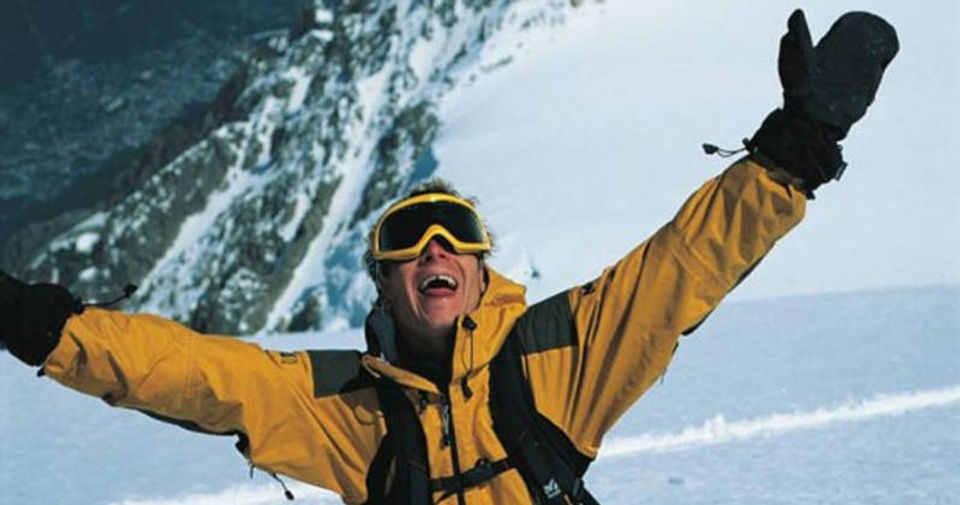
Early in August 2002, Siffredi departed Nepal, intending to make the first snowboard descent of Everest along the Hornbein Couloir, It was late in the season for summitting Everest, but Siffredi hoped that the passage would have more snow. On August 10, he left Kathmandu with three sherpa (Phurba, Pa Nuru and Da Tenzing), reaching base camp (BC) in Tibet on August 14. On September 7, the group reached the advanced field at 8,300 m. On Sept. 8, 2002, after a grueling 12-hour push, Siffredi and the sherpas reached the summit at 2:10 PM. According to Phurba Tashi, however, Siffredi showed little enthusiasm for the accomplishment, commenting that he was "Tired, tired...too much climbing..."

After weather conditions began to change, the Sherpas urged Siffredi not to go. Siffredi ignored their warnings and after only an hour's rest, began making his way towards the Hornbein just after 3pm. His sherpa companions lost sight of him periodically. At the North Col, about 1,300 meters below Camp Three, both Sherpas reported seeing the distant image of a man stand up, then slide silently down the mountain. As they reached the point of the sighting, Siffredi's snowboard tracks were not to be seen. His body has not been found.

In May 1996 Siffredi snowboards down the north face of the Aiguille du Midi on Mont Blanc along the Mallory track, a descent of 1,000 meters with passages of more than 50-degree incline.

In 1998, in preparation for climbing the Himalayas, scales Tocllaraju in Peru (6,032 M) with Philippe Forte and Rene Robert, then falls from snowboard.

On 17 June 1999 makes the first snowboard descent of the Nant Blanc wall of Aiguille Verte on Mont Blanc, with passages of more than 55-degree incline. In autumn of the same year scales Dorje Lhakpa (6,988 m) in Nepal and makes the first snowboard descent of this mountain.

Image Above - Ice Climbing Huayna Potosi Glacier Bolivia -13- July 2015. In June 2000 Siffredi scales Huayna Potosi (6,088 m) in Bolivia. In autumn scales Cho Oyu in the Himalayas; at 8,201 m, the sixth highest mountain on Earth.

Image Above - Shishapangma & Cho Oyu from Tibet - In autumn 2001 scales Shisha Pangma, Himalayas (8,027 m) with the intention of making the entire descent by snowboard, but strong winds begin and he is only able to use a portion of the 7,000 m.

Image Above - Snowboarder-Dylan-Thompson riding in Orem Utah-USA.

First in The World who summited Mount Everest from three sides. Two times from south col ,two times from North col and once from difficult khangsung face.
Kushang Sherpa (Bengali: কুশাং শেরপা; born 15 Feb 1965) is an Indian mountaineer, who in 1998 became the first person to reach the summit of Mount Everest from three sides. 15 February 1965 (age 50) (1965-02-15) Makalu Area, Nepal -
Early life
Kushang Sherpa was born on 15 February 1965 in a village in the Himalayas named Walung near Makalu base, Nepal. He ran away from home the first time at the age of 14 to work as a porter on an expedition that was passing through his village. He is the first person to have summited Mount Everest from three points of the compass.
Kushang Dorjee Sherpa is from Makalu originally, presently he lives in Darjeeling, West Bengal of India.
Ascents
He is the first person who have summited Mount Everest from three points of the compass. Kushang Dorjee Sherpa first summited Everest on May 10, 1993 via the standard south east ridge route. Next he summited via the standard north east ridge route on May 17, 1996. On May 28, 1998 he summited a third time the standard south east ridge. His fourth summit was via the east face of Everest on May 28, 1999.

First two people to marry on top of Mount Everest - Pem Dorjee and Moni Mulepati - Nepal - May 30th 2005


Image Above - Twin climbers Tashi and Nungshi Malik keep climbing to bigger heights after scaling to the summit of Mt Elbrus. First twins to climb Mount Everest together - Tashi and Nungshi Malik - India - May 19th, 2013

Image Above - Tashi & Nungshi Malik at Mount Everest

Image Left - Dorje Gylgen - First to climb the Everest Triple Crown - Kenton Cool and Dorje Gylgen - United Kingdom and Nepal - May 21st 2013.

Image Above - The Everest Circle Marathon: The Ultimate Challenge

Amputated Foot - Tom Whittaker - United States - May 27th, 1998
DISABLED CLIMBERS THAT SUCCESSFULLY SUMMITED MT EVEREST

Image Above - Blind - Summited Everest via South Col - Erik Weihenmayer - United States - May 25th, 2001

Nick Talbot, who was born in County Durham, recently became the first person with cystic fibrosis to climb Mount Everest, raising over £85,000 (and counting) for the Cystic Fibrosis Trust in the process. I’d climbed the sixth highest mountain [Cho Oyu]; I was looking for another personal challenge,’ he tells me. ‘I was also put on new medication. My way of giving back to the Cystic Fibrosis Trust previously was to take part in drugs trials as a guinea pig. I could no longer do that, so I was looking for a new way to help other people with cystic fibrosis.

Cystic fibrosis genetics: from molecular understanding to clinical application
‘I’ve got a milder condition. I’m one of the lucky four percent who are on what I’d call miracle medication, it’s truly revolutionary. Unfortunately 96 percent of people can’t get on it because of the different gene types. Most of them face the prospect of a lung transplant or other organs breaking down, it’s a pretty grim way to go. We’re now at the point where we have the scientific capabilities to make breakthroughs, but the key thing that’s missing is funding. It’s a race against time for people that are alive today as to whether new treatments will come through.’

Nick’s climb was his third attempt in three years, with his initial attempt halted by an avalanche that killed 16 Sherpas and his second by a huge earthquake that tragically claimed the life of one of his friends and left him severely injured. ‘There was an earthquake that hit the whole country and killed about 9,000 people,’ he says. ‘I was in base camp at the time. It shook off a large bit of glacier on a nearby mountain and essentially it created a bomb blast. I came out of my tent and there was a 200m wall of snow and ice coming towards me at 200mph. I had ten seconds to try and figure out what to do. I ran to lower ground but it caught up with me. I ended up with some broken ribs and the onset of hypothermia; I was covered in blood and ice basically.’

Cystic fibrosis targets the lungs, meaning that at high altitude Nick was faced with a disadvantage compared to the rest of his climbing group. How did he go about training then for the mammoth task that lay ahead? ‘Painfully!’ he laughs. ‘In terms of physical training I would do a variety of running up and down stairs (I live on the top floor, there are 26 flights), running up and down hills and then for fun I added on ankle weights and a rucksack. I also went skiing to the Alps with my family. First thing in the morning I’d be climbing to the top of the mountain with skis on my back. It was very intense, having had three years of that you can understand why I feel slightly relieved!’

In all the venture took two months, with the group doing various trips up and down to leave equipment at higher camps and acclimatise. ‘Eventually we got what we hoped was a weather window,’ Nick tells me. ‘It took us five days to get to the top and then two days back down to base camp. I knew I could get to 8,200m because I did that on another mountain. Altitude does funny things and you reach the limits of your capabilities, no one really knows how high they can go. I genuinely didn’t know if I’d get to the top – I only found that out two weeks ago!’

When it came to reaching the summit and the view from the top of the world, Nick’s happiness was mingled with a sense of relief and exhaustion. ‘It was great, it was really hard physically though. Every step you’re taking is fairly painful, even though you’ve got supplementary oxygen. It was hugely satisfying but also a relief because the amount of training you do takes over your life. I was slightly ahead of the group, myself and a guy called Pem had 15 minutes on top of Everest by ourselves which was incredible. All these mountains that you’ve looked up at you’re actually looking down at, you’re by far the highest thing up in the sky. It’s an incredibly beautiful country, I’m extremely lucky for so many reasons to have been able to experience it.’

Image Above - (L) Gary Guller Summits Cho Oyu - World's 6th Highest Mountain - Summited Mt Everest with Left arm amputated - Gary Guller - United states - May 23, 2003.
.jpg)
Image Above - Double leg amputee - Mark Inglis - New Zealand - May 15th, 2006

Right leg amputee - Nelson Cardona - Colombia - May 17th 2010

Image Above - With no fingers - Kim Hong-Bin - South Korea - May 16th 2007

Doulble arm amputee - Sudarshan Gautam - Nepal and Canada - May 20th 2013 - Born to a woodcutter and a housewife in 1978, he grew up amid the slopes of Ramechhap district in a village east of Kathmandu. As a child he loved soccer and science projects, and dreamed of becoming a pilot or politician. At age 15, those hopes were violently sidelined in a tragic accident. He was flying a kite that got caught in some uninsulated wires. When he reached to free it, 11,000 volts coursed through his body. “My arms were completely burned,” he says. They had to be amputated. Cloistered in a hospital for eight months and deserted by his friends, Gautam fell into depression.

Bright coloured kites, spools and their coloured threads paint a perfect picture in the Indian skies especially during the harvest festivals and the Indian independence day. In the country, kite flying goes beyond festivities – it is an expression of patriotism and also marks the beginning of a new season.
The sky is filled with seemingly tiny colourful quadrangles as people shout “Aayi-bo-kaate” (I got you) from their rooftops as they attempt to bring down another person’s kite by cutting its thread. The air is filled with the noise of “Aayi-bo” as neighbours also join the winner for the chant.
The tradition of kite flying in India is ancient and believed to have been brought into the country by Chinese travellers Huin Tsang and F Hien. The earlier Chinese kites were rectangular and flat, and were used for measuring distances, signaling and also for communicating military operations.
After kites were introduced in India, they were named in Hindi as patang (fighter kite).




Image Above - Nepal Commerce Campus college - Over the next few years, Gautam worked up the will to re-enter the world, teaching himself to eat, cook, dress, write, type, shave and even drive stick using only his feet. He enrolled at the Nepal Commerce Campus college, becoming student council president and advocating for the rights of disabled students. He founded a disabilities centre in his district. In his off-hours he scaled Nepalese heights like Mount Yala and Mount Ramdung, seeking to challenge himself and inspire strength in fellow amputees. “I transformed from being a poor, pitiable child to somebody who could help others.”

Image Above - Civil war victims demand compensation at a rally. Credit: Renu Kshetry/IPS - Gautam became more outspoken on state corruption and landed on government radar at the height of Nepal’s civil war, when subversive commentary wasn’t taken lightly by the monarchy. He claims he was kidnapped twice by local authorities for his criticism. “Our country is very beautiful, but the leaders are very corrupt … and not very responsible to the public,” he says. In 2006, Gautam and his wife fled to Calgary, with the nearby Rockies “resembling a home away from home.” He was seeking “a better life and a safe future,” one that could accommodate his disability and the right to dissent. Since then, Gautam has worked as a social activist, raised a young family and obtained Canadian citizenship. He moves easily between the local awards galas of urban Canada — he’s been lauded at a few — and the unpaved roads of rural Nepal, to which he’s returned repeatedly for community projects and film shoots.
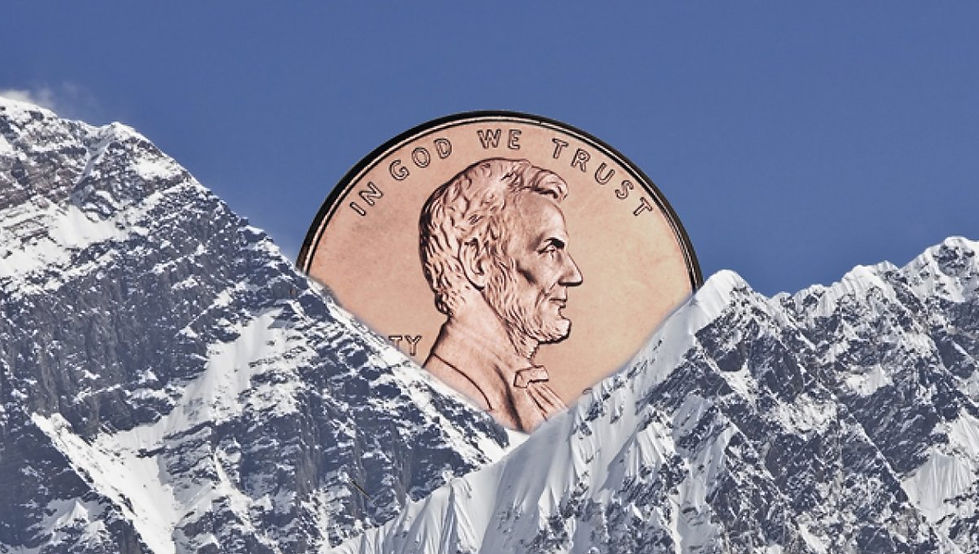
In 2013, Gautam found himself again drawn back to his homeland. The prospect of Everest loomed in his mind like a rocky hurdle, one he felt compelled to leap “to spread the message that disabled people can do extraordinary things.” He sold his property in Nepal to muster more than $100,000 for the journey. His father also scraped together cash to sponsor him. Gautam banked his own sense of self-worth on the expedition, despite the warnings. “We don’t want to lose you, Gautam,” he recalls friends saying. “You cannot go, it’s madness.”

Colorful tents and Tibetan prayer flags at Everest Base Camp, Khumbu Region, Nepal.
‘Most of the climbers had already turned back …’
Gautam arrived near Everest’s South Base Camp, 5,400 metres above sea level, in spring 2013. He spent two months day-hiking the snow-scoured plateaus nearby, acclimatizing himself to the low-pressure air. He used a modified harness looped around his chest, tied to his jacket sleeve and secured to a Sherpa to catch him in case of a fall. Early on May 20, a day after setting out from Camp 3 on Everest’s south side, his team of 10 climbed into the notorious “death zone,” a treacherous series of icy slopes more than 8,000 metres up. In that moonscape the air is so thin that even supplemental oxygen fails to nourish brain and body for long.

A new milestone in virtual mountaineering was celebrated, as the two Nepalesemountain guides Lakpa Sherpa and Pemba Rinji Sherpa with the support of their colleagues Ang Kaji Sherpa and Kusang Sherpa became the first men in the world to document the whole South route to the summit of Mount Everest with a 360° camera rig for Mammut’s #project360. The full route is now online and can be seen at http://project360.mammut.ch. Hours from the summit, facing a snaky, serrated ridge swathed in cloud, Gautam disregarded his team’s repeated suggestions to turn around. “Most of the climbers had already turned back because of fatigue, oxygen problems, lack of energy,” he says. “I thought, no, do or die, there is no option.” On gnarled crampons, stumbling through snow and dimming senses, he reached the peak at 10:50 a.m. “I cried,” he says. “Everybody cried. That was my big challenge for the world. That’s the biggest challenge for my life.” Gautam was the first and so far only person without arms to climb the world’s tallest mountain without the use of prosthetics. “He took the challenge — that’s the kind of person he is,” says Dibya Pradham, former president of the Calgary Nepalese Community Association. “You can’t believe someone without arms can climb Mount Everest. It just seems impossible.”

Brantford-Ontario-disability-support-office
Gautam, who supports himself with some money from his movies and the Ontario Disability Support Program, intends to raise funds for disabled and orphaned children in rural communities through his own non-profit, the Leg Is My Arm foundation, as well as Nepalese and Canadian NGOs. He wants to launch a Nepalese branch of the B.C. Mobility Opportunities Society, a non-profit that helps people with disabilities explore the outdoors. He also plans to climb North America’s tallest peak, Denali in Alaska, to raise awareness this year, and then, in 2017, to conquer Everest all over again.

100 Years Denali National Park - “It’s what I have to do,” he says. “Compared with what I have had to face and to learn in my life, and compared with what I hope to do, Everest is easy.” Victory over the mountain wasn’t total, however. Hours after summiting, one man on the crew, a Bangladeshi film director on his second climb up Everest, lost consciousness because of a lack of oxygen. “My team saw him slide down, and he died,” Gautam says. He recalls having difficulty thinking and losing energy on his descent through the death zone. He collapsed. He has little memory of the helicopter that hovered into view hours later, making a record-breaking rescue at 7,800 metres.
“The hardest thing is to go up,” Gautam says, “but it’s a thousand times harder to go down.”
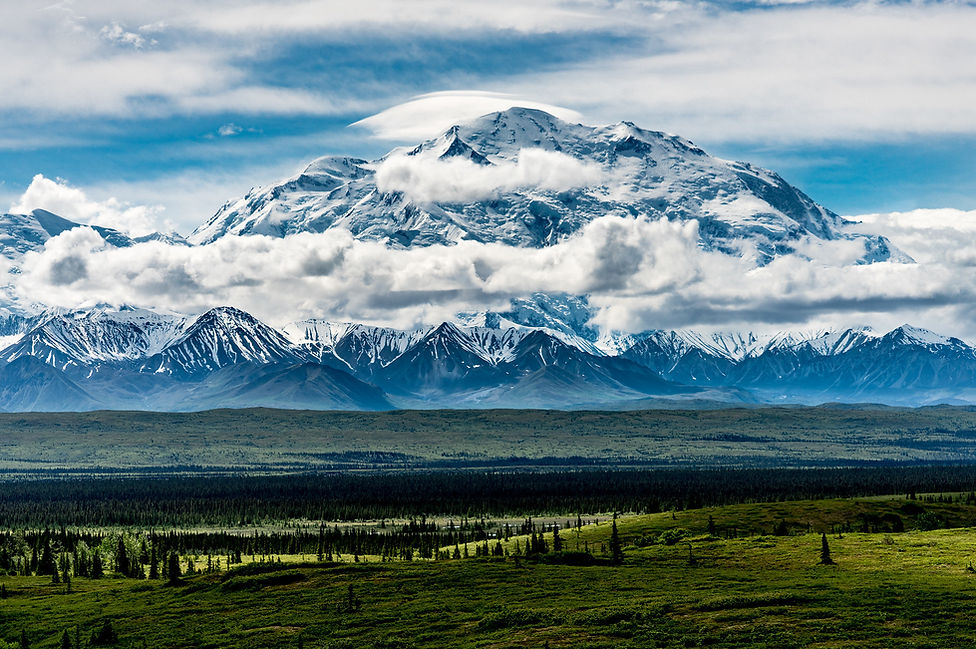
Denali National Park, Alaska


Denali-route

Denali also known as Mount McKinley, it's former name, is the highest peak in North America, with a summit elevation of 20,310 feet (6,190 m) above sea level. With a topographic prominence of 20,156 feet (6,144 m) and a topographic isolation of 4,629 miles (7,450 km) Denali is the third most prominent and third most isolated peak on Earth, after Mount Everest and Aconcagua, located in the Alaska Range in the interior of the U.S. state of Alaska, Denali is the centerpiece of Denaili National park and Preserve.

Female amputee (One Leg) Arunima Sinha - India - May 21st 2013

Hemophiliac - Chris Bombardier - United States - May 22nd - 2017
.png)
Chris Bombardier on Mount Everest.

Image Above - Insulin dependent diabetic - Geri Winkler - Austria - May 20th 2006

Type I diabetes - Will Cross - United States - May 23rd 2006
.jpg)


Image Above - Lori Schneider on Everest summit -World MS day flag - Multiple Sclerosis first woman - Lori Schneider - United States - May 23rd 2009

Multiple Sclerosis first man - Niels van Buren - The netherlands - May 2016 -
Multiple sclerosis (MS) is a condition that can affect the brain and/or spinal cord, causing a wide range of potential symptoms, including problems with vision, arm or leg movement, sensation or balance.
It's a lifelong condition that can sometimes cause serious disability, although it can occasionally be mild.
In many cases, it's possible to treat symptoms. Average life expectancy is slightly reduced for people with MS.
It's estimated that there are around 127,000 people diagnosed with MS in the UK.
It's most commonly diagnosed in people in their 20s and 30s, although it can develop at any age. It's about 2 to 3 times more common in women than men.

Symptoms of MS
The symptoms of MS vary widely from person to person and can affect any part of the body.
The main symptoms include:
-
fatigue
-
difficulty walking
-
vision problems, such as blurred vision
-
problems controlling the bladder
-
numbness or tingling in different parts of the body
-
muscle stiffness and spasms
-
problems with balance and co-ordination
-
problems with thinking, learning and planning
Depending on the type of MS you have, your symptoms may come and go in phases or get steadily worse over time (progress).














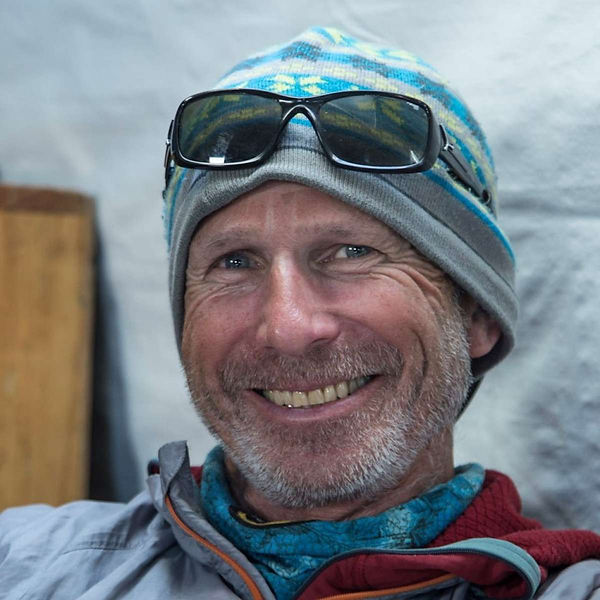










_JPG.jpg)










